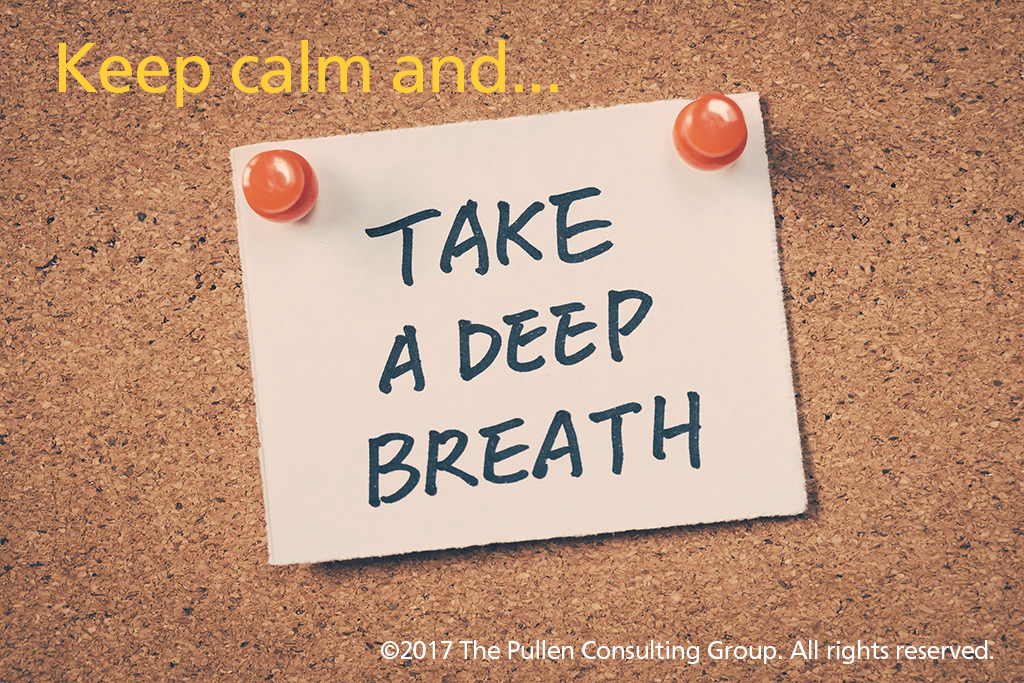Within hours of my last blog I received a number of comments about our responses to stress, specifically level two responses. As promised in this blog we will discuss tools to calm those responses.
First, just knowing that it isn’t the content of our lives that causes stress as much as how we respond to the content. In the last blog I used the example of tripping over something left on the floor and that it is the story we tell ourselves, such as, “I’m an idiot for tripping or who in the heck left something on the floor?” Notice, we consistently default to self-blame/judgment or blaming others/judgment. Thus the first tool is self-awareness. Notice your pattern of judgment.
Then, the quickest way to capture your whole brain is to regulate your breathing by taking a few deep breaths. Try it now, isn’t it amazing that just taking a few deep breathes calms us down? Once you are in control of your physiology try the following:
Deep relaxation: When you are very relaxed it is hard to feel stressed. Take the time to continue your full breaths and then progressively move through your body; tightening then relaxing your body starting with your feet and working your way up to your head. Notice the primary areas of stress in your body. This is an excellent practice for those of you who wake up stressed in the middle of the night.
Catch your negative thoughts: We feel the effects of what we say to ourselves. If your are condemning yourself for something reframe the negative thought. In our prior example, “I’m blaming myself for being an idiot for tripping.” Simply stand up against the negative thought by saying, “I’m not an idiot, it is human to trip! Not to mention, I’m strong and conscientious.” Reprogramming those negative thought patterns. Keep in mind; negative thought patterns sometimes exist for decades, so replacing them takes a lot of work and patience. This is true, especially if you are at the very beginning of creating a new pattern.
Mindfulness: This just means noticing something in the moment and not judging it or resisting it. For example, notice your breath, the warmth or coolness, how it moves through your body. Let your thoughts go and your feelings be. Practices that support this are meditation and yoga.
Connect to what is meaningful for you: For example, nature, a pet, music, a family member, a poem, move your body. Know what comforts you.
Be a good parent to yourself: We all know how to be a good parent to our children or loved one. Why do we tend be such a harsh parent to ourselves? Practice being a good parent to yourself. Go out and play!
Positive Imagery: Picture your favorite ski run, a special place in nature, the smile of a child, or a favorite piece of art. This will help you engage in a positive way to the present moment.
Best of luck and please remember that it takes a lot of practice to create new patterns but you are worth it!
